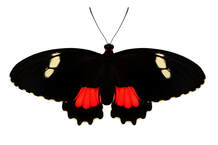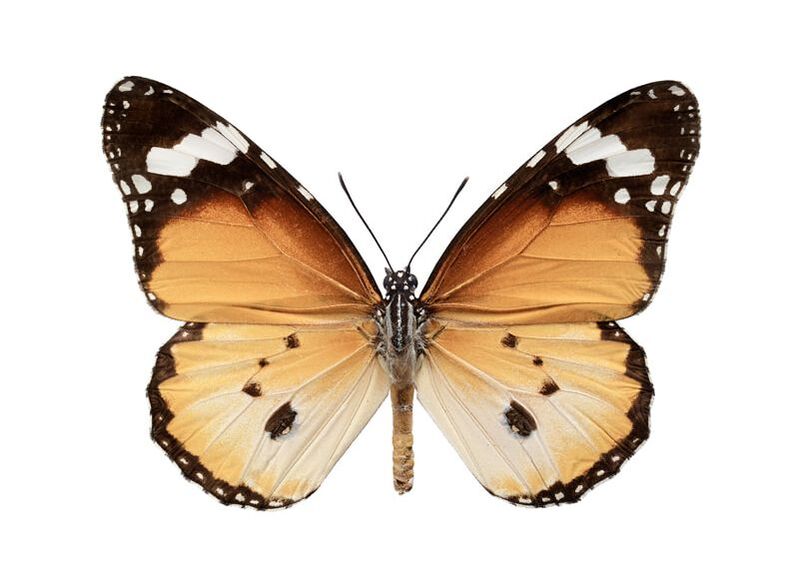COSTA RICA
Caligo atreusGreat Owl
Hamadryas laodamiaStarry Night
Heliconius hewitsoniHewitson's Longwing
Papilio polyxenesBlack Swallowtail
|
Caligo memnonPale Owl
Heliconius cyndoCyndo Longwing
Heliconius charitoniusZebra Longwing
Papilio thoasKing Swallowtail
|
Dryas iuliaJulia
Heliconius hecaleTiger Longwing
Myscelia cyanirisBlue Wave
Siproeta stelenesMalachite
|
SOUTH EAST ASIA
Attacus atlasAtlas Moth
Hypolimnas bolinaGreat Eggfly
Papilio rumanzoviaRuby Swallowtail
Hebomoia glaucippeGreat Orange Tip
|
Cethosia biblisRed Lacewing
Idea leuconoePaper Kite
Parthenos sylviaClipper
Doleschalia bisaltideAutumn Leaf
|
Cethosia hypseaMalay Lacewing
Ideopsis juventaGray Glassy Tiger
|
Danaus chryssipusAfrican Monarch
Papilio demoleusCommon Lime
Papilio palinurusGreen-Banded Peacock
|
Graphium agamemnonTailed Jay
Pachliopta kotzebueaPink Rose
Papilio polytesCommon Mormon
|
Butterflies are known as insects with a "complete" life cycle. This means that they have four completely separate stages of life, each of which looks entirely different from the next, and serve different purposes in the life of the insect.
Eggs are tiny, round, oval, or cylindrical depending on the variety of Butterfly. Females attach the eggs to leaves, stems, or other parts of the plant that are generally near where the caterpillar will find food.
Caterpillars (or larva) are the long worm-like stage of the butterfly. They often have intricate patterns or patches on them and some may have spine-like hairs. This is the feeding and growth stage in the cycle, where they will find leaves and stems of host plants that are specific to their species.
The Chrysalis (or Pupa) is the stage that our residents are in when they arrive at Butterfly World Coombs. This is the transformational stage within which the caterpillar tissues are broken down and the adult insect's structures are formed. Make sure to check out the Chrysalis' in the Emerging Area. If you're lucky you might see one transform into a beautiful butterfly right before your eyes!
Butterflies are the adult (or Imago) stage of the cycle. This is the reproductive and mobile stage of the insects life. Adults live the remainder of their life span in our greenhouse, where they enjoy sipping nectar from fruit or flowers, and partake in courtship, mating and laying their eggs.
Eggs are tiny, round, oval, or cylindrical depending on the variety of Butterfly. Females attach the eggs to leaves, stems, or other parts of the plant that are generally near where the caterpillar will find food.
Caterpillars (or larva) are the long worm-like stage of the butterfly. They often have intricate patterns or patches on them and some may have spine-like hairs. This is the feeding and growth stage in the cycle, where they will find leaves and stems of host plants that are specific to their species.
The Chrysalis (or Pupa) is the stage that our residents are in when they arrive at Butterfly World Coombs. This is the transformational stage within which the caterpillar tissues are broken down and the adult insect's structures are formed. Make sure to check out the Chrysalis' in the Emerging Area. If you're lucky you might see one transform into a beautiful butterfly right before your eyes!
Butterflies are the adult (or Imago) stage of the cycle. This is the reproductive and mobile stage of the insects life. Adults live the remainder of their life span in our greenhouse, where they enjoy sipping nectar from fruit or flowers, and partake in courtship, mating and laying their eggs.
DID YOU KNOW?
|
Our butterflies come to us in the Pupa stage, and hail from South America and Asia. They are hatched from their Chrysalis in our Emerging Area. Once released into the greenhouse they generally live twice as long in captivity.
Butterfly Gardens are famous all over the world for being relaxing, and beautiful environments that foster learning and an appreciation for nature. Butterfly World Coombs is no different. It is possible to attract beautiful butterflies to your own backyard. Our Outdoor Butterfly Garden is a great example of native plants that you can use in Zone 8B (this part of Vancouver Island) to invite native varieties to your home. Keep your eye out for our locals in the outdoor garden area. |
Butterflies respond to the weather. Although they are indoors in our climate controlled greenhouse, they are very responsive to sunlight. So on darker days they are a little more lethargic, but once the sun comes out you'll find an increased amount of activity within minutes!
When you visit Butterfly World Coombs, you are also supporting a network of hundreds of farmers in Costa Rica and the Phillipines! The farmers maintain beautiful gardens of their own to attract wild butterfly species and cultivate their eggs. So in a way, by supporting us, you are supporting the maintenance of essential green spaces in other parts of the world, and families who are working hard to build sustainable export streams for their countries. |









































